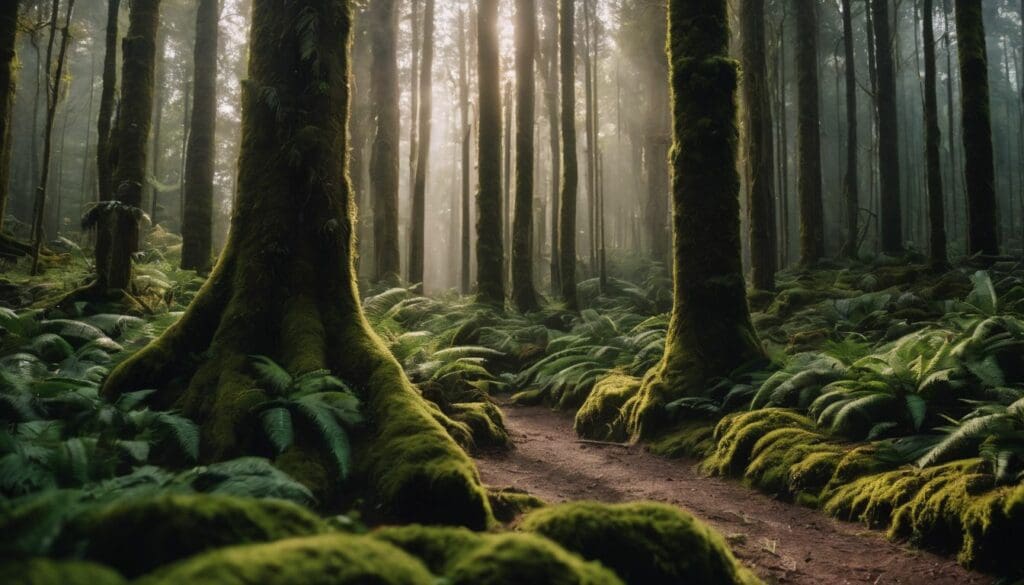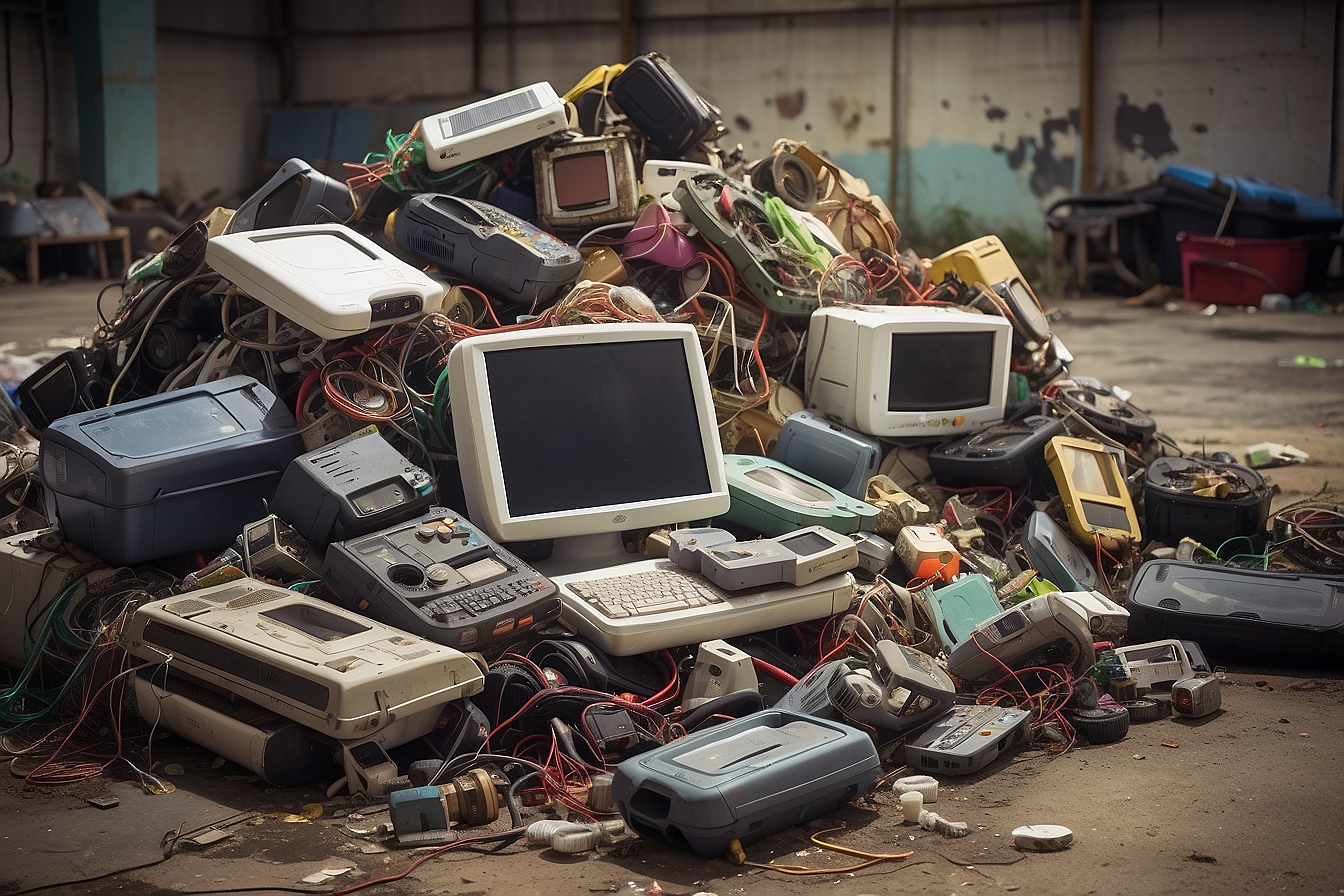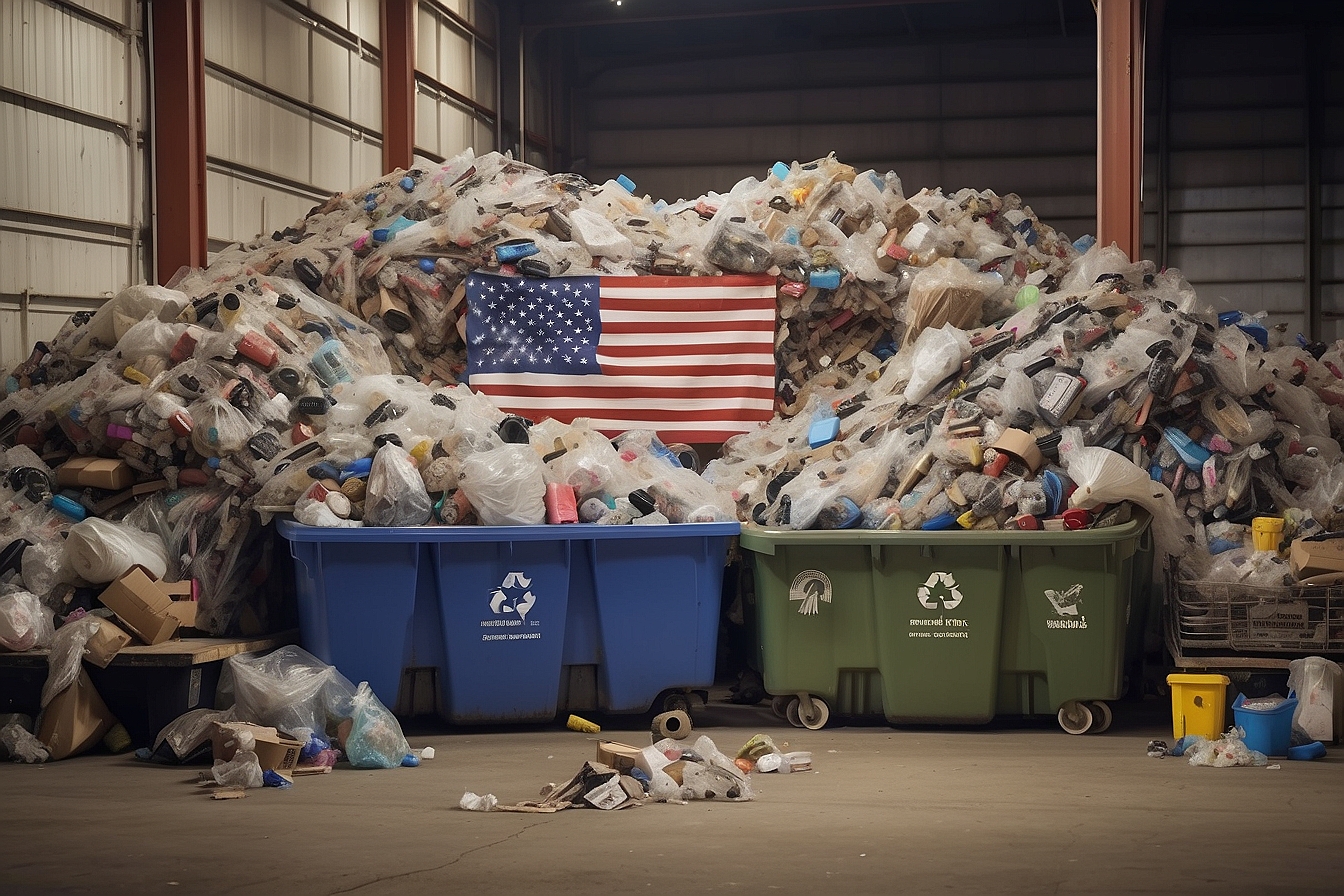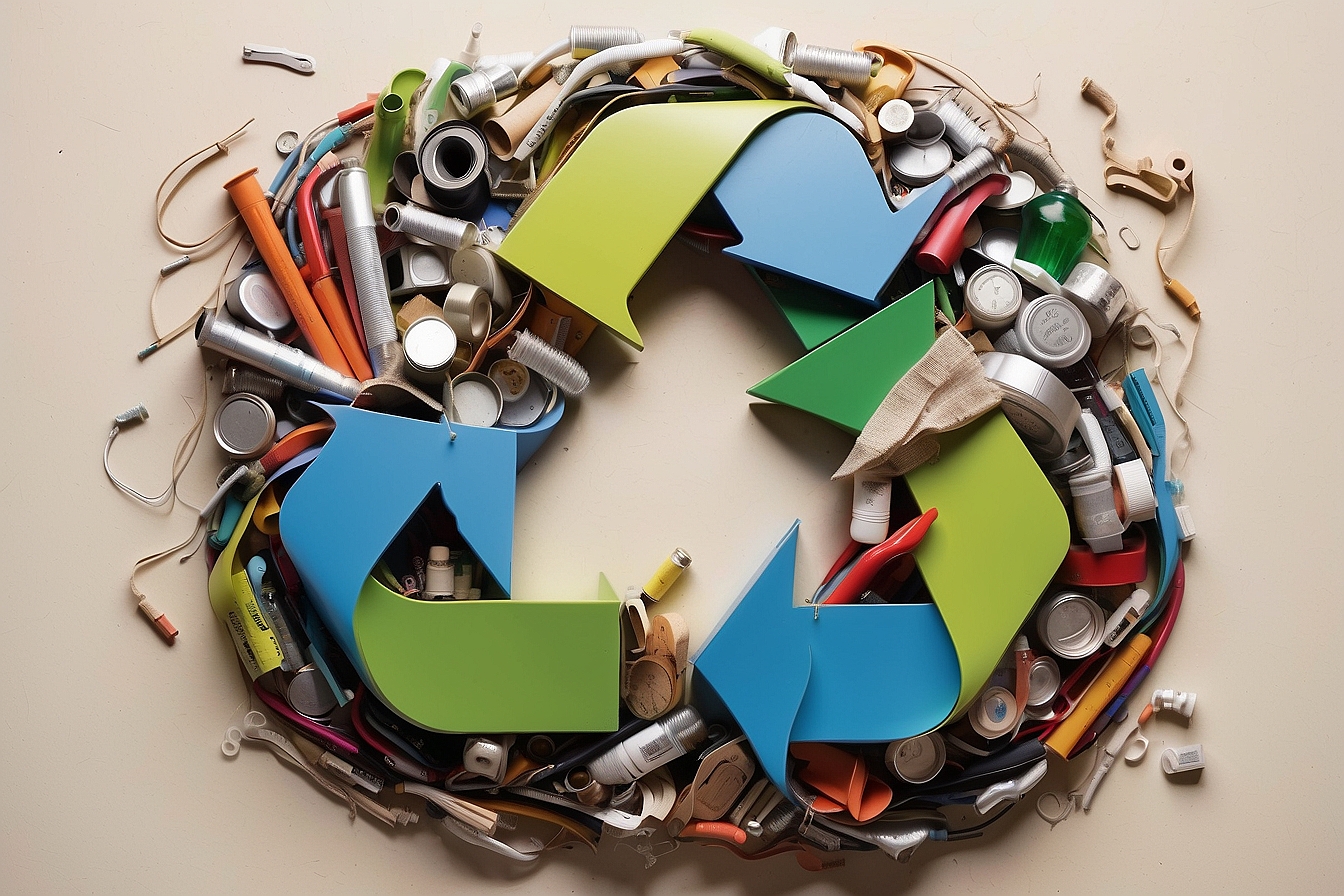We all know that sinking feeling, the one where the sheer volume of packaging waste becomes not just a statistic but a tangible source of discomfort. It’s like an itch we can’t quite scratch, isn’t it? The knowledge that our beautiful green Earth is being mistreated does weigh heavily on us.
But in every cloud, there’s a silver lining! My dedicated team and I have been burrowing into this conundrum with gusto and guess what we unearthed? A whopping 140 million tonnes of plastic consumed annually for wrapping up our goods!
What if I told you there are clever ways to tackle this beast? Yes, you read right—solutions abound to lighten this load from Mother Nature’s shoulders. In this article, we’ll peel back layers of innovation as easily as peeling an orange (biodegradable packaging pun intended).
So come along; let us embark on a journey filled with eco-conscious choices – your very own adventure towards sustainability starts here!
Key Takeaways
- Many companies are creating packaging from recyclable materials like cardboard, paper, glass, and certain plastics. This helps cut down how much rubbish we produce.
- Some brands are now using low – waste options such as biodegradable or compostable containers for their products. These can break down naturally without polluting the planet.
- New businesses are coming up with smart ways to reduce packaging waste by using things like computer programmes that find the best type of package for a product’s size and weight.
- Startups are inventing cool stuff like edible cups and mushroom – based packing materials to offer alternatives to traditional plastic packaging.
- With AI technology, we can make better choices that lessen our impact on the environment when it comes to how we wrap and ship things.
Innovative Sustainable Packaging Solutions
With the increasing demand for eco-friendly packaging, innovative solutions have emerged to reduce waste and minimise environmental impact. From low-waste packaging options to recyclable materials and machine learning algorithms that determine optimal packaging solutions, there are various sustainable alternatives available in the market today.
Low-waste packaging options
We understand the importance of reducing packaging waste in our daily lives. Our commitment is to provide sustainable solutions that help us all make a positive environmental impact.
- Opt for paper – based packaging when possible, as it is readily recyclable and biodegradable, reducing the need for plastics.
- Use materials made from plant fibres like hemp, which can be grown sustainably and serve as an eco-friendly packaging alternative.
- Implement reusable containers for certain products, encouraging customers to refill rather than discard.
- Incorporate minimal design strategies to use less material while still protecting products effectively.
- Choose materials that are both recycled and recyclable, closing the loop on resource use and emphasising circular economy principles.
- Develop compostable packaging options for items like foodstuff, which break down naturally without harming the environment.
- Support innovations in sustainable packaging engineering that lead to new materials with reduced carbon footprints.
- Employ zero – waste packaging for certain goods by removing unnecessary elements often found in traditional packaging methods.
Recyclable materials
Packaging made from recyclable materials plays a significant role in reducing waste. It allows for the reuse of resources, lowering the overall carbon footprint. Choosing sustainable and recyclable materials ensures that packaging can be repurposed rather than ending up in landfills, thus contributing to effective waste management.
By opting for easily recyclable materials such as cardboard, paper, glass, or certain types of plastics like PET and HDPE, brands can demonstrate their commitment to environmentally friendly practices.
Additionally, utilising recyclable materials enhances brand image by showing an active effort towards sustainability. Consumers are increasingly drawn to products with eco-friendly packaging and sustainable design.
Machine learning algorithms to determine optimal packaging solution
Using machine learning algorithms, we can analyse large sets of data to identify the most efficient and sustainable packaging solutions. These algorithms consider factors such as material type, weight, volume, and transportation methods to determine the optimal packaging choice that minimises waste and reduces the carbon footprint.
By harnessing the power of AI technology in this way, we can make informed decisions that lead to significant reductions in packaging waste while improving our environmental impact.
Incorporating machine learning algorithms into our packaging processes allows for precise customisation according to specific needs and requirements. This not only enhances sustainable materials’ usage but also contributes to overall brand image improvement by portraying a commitment towards environmentally friendly practices.
Advancements in Sustainable Packaging
Some of the recent advancements in sustainable packaging include 12 startups leading the way in eco-friendly packaging trends, the innovation of turning waste into new materials, and the use of AI-powered Innovation Sprint to drive packaging sustainability forward.
These advancements show promising progress in reducing packaging waste and minimising our carbon footprint.
12 startups leading sustainable packaging trends
We are witnessing a transformative era in packaging, where innovation and sustainability converge to reduce waste. Several start-ups are pioneering this movement with their cutting-edge solutions. Below, we outline 12 of these trailblazers revolutionising the way we think about packaging.
table {
font-family: Arial, sans-serif;
border-collapse: collapse;
width: 100%;
}
td, th {
border: 1px solid #dddddd;
text-align: left;
padding: 8px;
}
th {
background-color: #f2f2f2;
}
Start-ups Leading Sustainable Packaging Trends
| Start-up | Innovation | Impact |
|---|---|---|
| Ecovative Design | Mushroom-based packaging | Biodegradable alternative to Styrofoam |
| Notpla | Edible water pods | Reduces single-use plastic for beverages |
| Loliware | Edible cups and straws | Offers a tasty solution to plastic waste |
| TIPA Corp | Compostable flexible packaging | Mimics plastic properties but is fully compostable |
| Paptic | Wood-based alternative to plastic bags | Renewable and recyclable material use |
| Loop Industries | Upcycling waste materials into PET plastic | Enables infinite plastic recycling |
| RePack | Reusable packaging service | Cuts down on packaging waste for e-commerce |
| Bee’s Wrap | Organic reusable food wraps | Alternative to plastic cling film |
| Avani | Cassava-based materials | Biodegradable and compostable product range |
| Apeel Sciences | Plant-based protection for produce | Extends the shelf life of fruits and vegetables |
| Virent | Plant-based plastic bottles | Lower carbon footprint than traditional PET |
| Sulapac | Wood-based biodegradable composites | Plastic-like but leaves no microplastics |
We stand alongside these innovators, eager to embrace and drive forward the sustainable packaging movement. Their efforts shape a future where packaging sustains rather than drains our precious environmental resources.
Turning waste into new materials
We can minimise the impact of packaging waste by turning it into new materials. Companies are developing innovative processes to convert waste into valuable resources, such as biodegradable and recyclable materials.
By repurposing waste, we can reduce our carbon footprint and contribute to a more sustainable future. This approach aligns with the growing demand for environmentally conscious packaging solutions that support conservation efforts.
Innovative technologies like AI-powered innovation sprints are driving advancements in turning waste into new materials. Startups are leading the charge in leveraging these technologies to create packaging solutions that prioritise sustainability and reduce environmental impact.
AI-powered Innovation Sprint
Our AI-powered Innovation Sprint focuses on leveraging cutting-edge technology to develop sustainable packaging solutions. By harnessing the power of machine learning algorithms, we can analyse vast amounts of data to determine the most efficient and environmentally friendly packaging options.
This approach not only reduces waste but also helps in minimising our carbon footprint, contributing towards a greener future for all.
With AI at the forefront of our sustainability efforts, we are constantly refining and optimising our packaging processes to meet the growing demand for eco-friendly alternatives. These innovations will pave the way for a more sustainable future while offering practical solutions that benefit both businesses and the environment.
Conclusion
Innovations in sustainable packaging are rapidly reducing waste and helping to lower our carbon footprint. Low-waste packaging options, recyclable materials, and machine learning algorithms are revolutionising the industry.
Startups are leading the charge in turning waste into new materials, while AI-powered solutions continue to drive sustainable packaging forward. These advancements offer environmentally conscious individuals an array of green and plastic-free packaging options to support conservation efforts.
FAQs
1. What is sustainable packaging?
Sustainable packaging involves using biodegradable materials and green innovations to reduce waste and lower the carbon footprint caused by traditional packaging methods.
2. How does sustainable packaging help the environment?
By choosing recyclable or plastic-free options, we greatly minimise packaging waste, manage resources more efficiently, and contribute to overall carbon footprint reduction.
3. Are there any new innovations in green packaging?
Yes, there are many green packaging innovations including compostable containers and plant-based packing materials that help in reducing waste effectively.
4. Can businesses benefit from using sustainable packaging options?
Definitely! Businesses adopting sustainable practices are seen as environmentally conscious which can attract eco-friendly consumers and sometimes even reduce costs related to wastefulness.
5. Is all sustainable packaging material also recyclable?
While a lot of it is designed for recycling, some sustainable materials are intended to biodegrade naturally; each type serves the goal of cutting down on rubbish that harms our planet.





